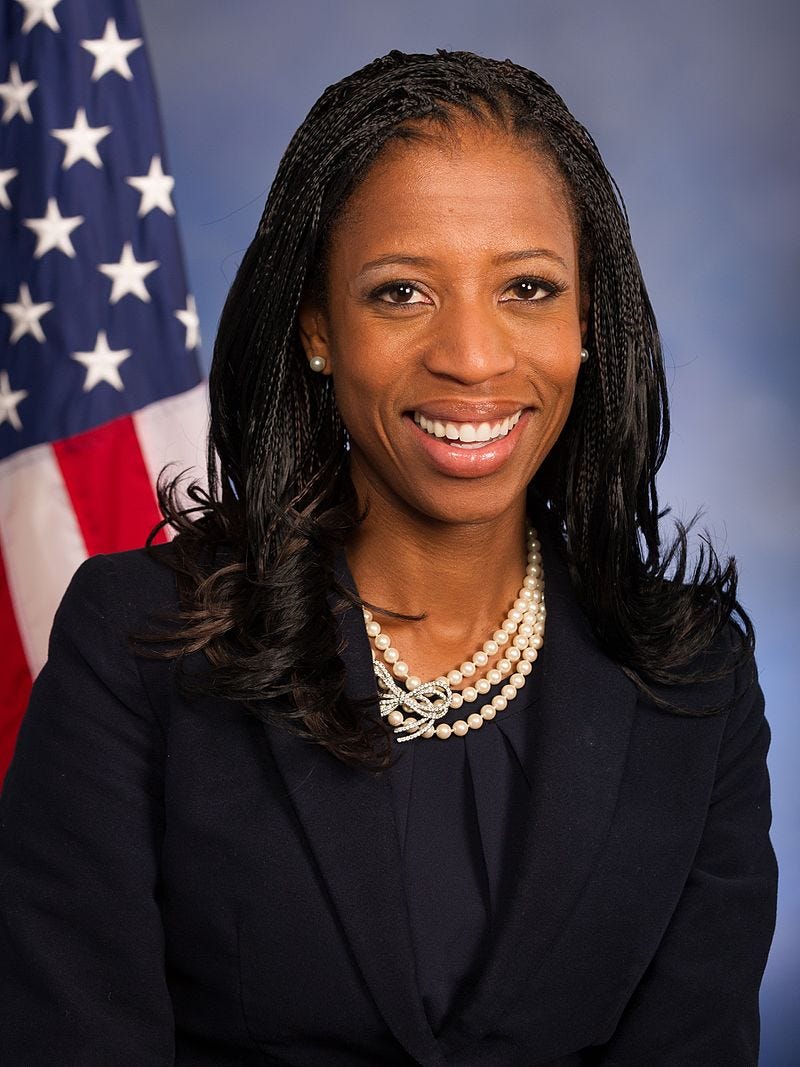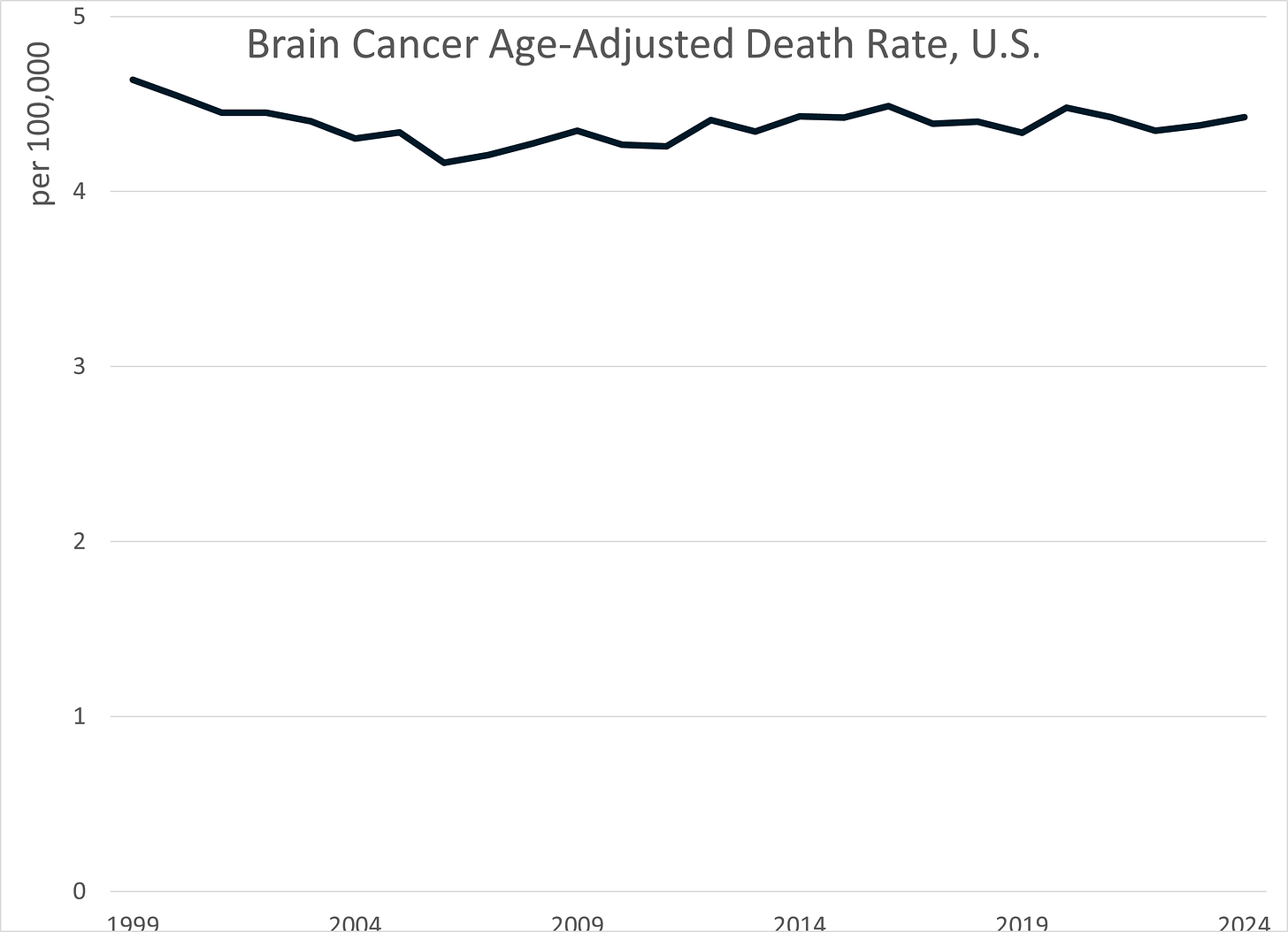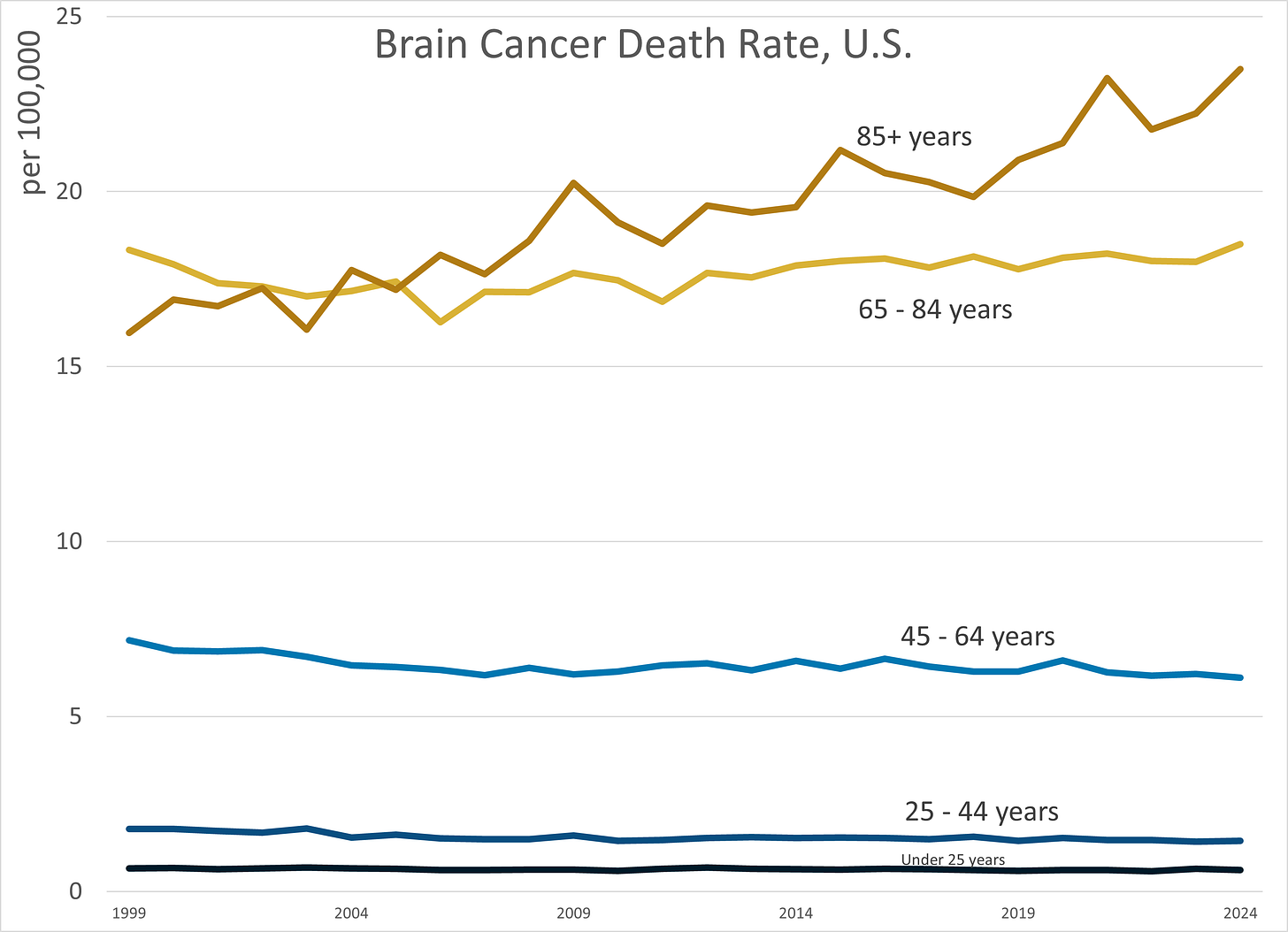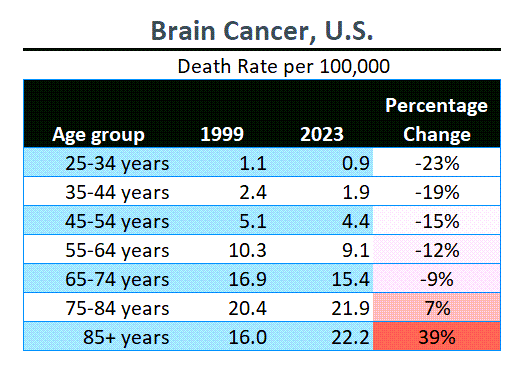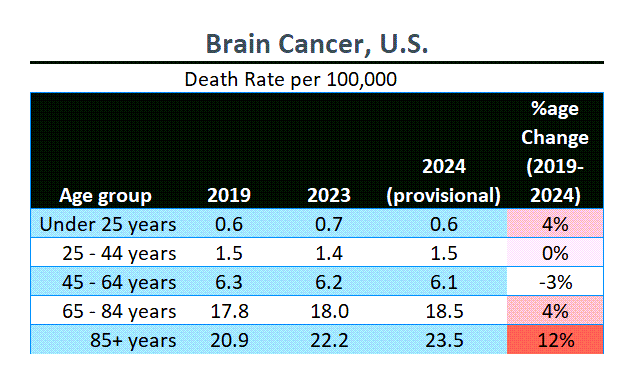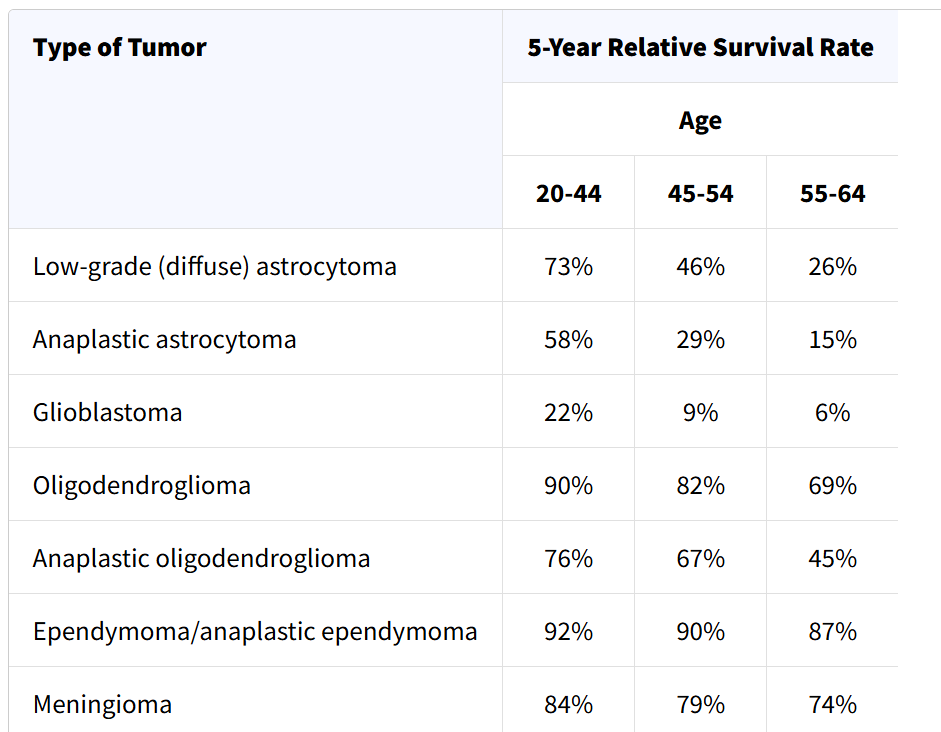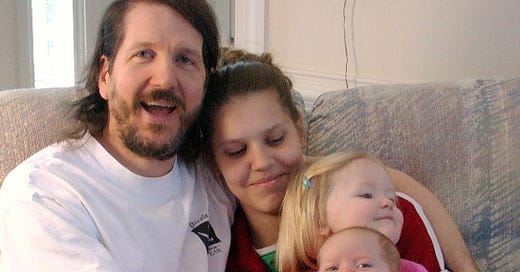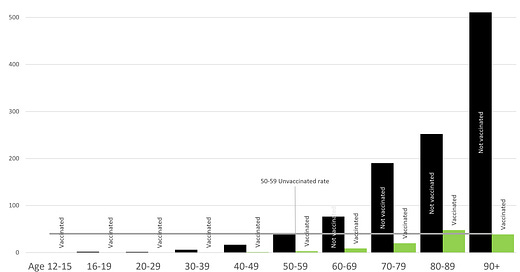RIP, Mia Love: Some Stats on Brain Cancer
And specifically, glioblastoma - which has awful survival stats
24 Mar 2025, WSJ: Former Utah Congresswoman Mia Love Dies at 49
Mia Love, who was the first and so far only Black woman to be elected to Congress as a Republican, has died in Utah, her family announced. She was 49 years old.
Love was diagnosed with brain cancer in 2022 and had most recently been receiving treatment as part of a clinical trial. The former two-term lawmaker’s family had said earlier this month that Love was no longer responding to treatment.
Born in New York, Love moved to Utah in 1998. She joined the Church of Jesus Christ of Latter-day Saints, or LDS, referred to as the Mormon Church.
….
Months later [in 2016], she won election to represent the Salt Lake City suburbs by 3 percentage points. After her victory she said, “Many of the naysayers out there said that Utah would never elect a black, Republican, LDS woman to Congress. And guess what? Not only did we do it, we were the first to do it.”
In office, Love joined the Congressional Black Caucus, the Congressional Western Caucus and the Climate Solutions Caucus. She served on the House Financial Services Committee.
Love’s district consistently has been one of the most competitive in the U.S. since it was established after the 2010 Census. She lost re-election in 2018 to former Salt Lake County Mayor Ben McAdams, a Democrat. GOP Rep. Burgess Owens ousted McAdams two years later.
….
Love’s “energy, enthusiasm and wit made her a stand-out member of Congress,” said former Republican Utah Sen. Mitt Romney. “Her faith and fortitude made her a model for me and for countless others.”
Republican Utah Gov. Spencer Cox said that he was “heartbroken” by Love’s death. She was a “true trailblazer and visionary leader,” he said.
24 Mar 2025, Roll Call: Mia Love, first Black Republican woman elected to Congress, has died at age 49
Love was diagnosed in 2022 with glioblastoma, a form of brain cancer. She and her family had recently announced that the cancer was no longer responding to treatment. Her death came less than two weeks after she published a farewell message in the Deseret News.
11 Mar 2025, Deseret News: Mia Love: My living wish for the America I know
My dear friends, fellow Americans and Utahns. I am taking up my pen, not to say goodbye but to say thank you and express my living wish for you and the America I know.
My battle with brain cancer is coming to an end. The disease is no longer responding to treatment and my family and I have shifted our focus from treatments, to enjoying every moment and making memories with the time we have. My life has been extended by exceptional medical care, science and extraordinary professionals who have become dear friends. My extra season of life has also been the result of the faith and prayers of countless friends, known and unknown. The result of such humble faith and pleading prayers have been felt by me and my family in ways too numerous to count. I have always believed that faith and science are inextricably interconnected.
….
Let me tell you about the America I know. My parents immigrated to the United States with $10 in their pocket and a belief that the America they had heard about really did exist as the land of opportunity. Through hard work and great sacrifice they achieved success — so the America I came to know growing up was filled with all the excitement found in living the American dream. I was taught to love this country, warts and all, and understand I had a role to play in our nation’s future. I learned to passionately believe in the possibilities and promise of America.
….
The America I know is grounded in the gritty determination found in patriots, pioneers and struggling parents, in small business owners with big ideas, in the farmers who work in the beauty of our landscapes and the artists who paint them, in our heroic military and our inspiring Olympic athletes, and in every child who looks at the seemingly impossible and says, “I can do that.”
The America I know is great — not because government made it great but because ordinary citizens like me, like my parents and like you are given the opportunity every day to do extraordinary things. That is the America I know!
High-Level U.S. Brain Cancer Death Rate Trend, 1999-2024
Alas, here comes the life actuary with the mortality statistics, which is one area of the America I know (which isn’t that bad, y’all, but it is a very specific view.)
These are the age-adjusted death rates, with the 2024 rate being provisional:
At the highest level, brain cancer age-adjusted death rates don’t have much of a trend.
If I split it out by age group:
There is a trend for the oldest age groups, but be a little careful about jumping to any conclusions.
Tables for Long-Term and Short-Term Trends
For convenience, here are the cumulative changes in death rates by age groups for brain cancer.
Long-term changes, 1999-2023
YIKES!
Yeah, it does look like the brain cancer increase for the 85+ years old group looks huge….
…but.
Let me give you some (actually nice) facts: the overall death rates for the age 85+ group went from:
15,555 per 100,000 in 1999
also known as a 15.6% chance of dying in one year.
to
14,345 per 100,000 in 2024
also known as a 14.3% chance of dying in one year.
These are rather high chances of dying within one year. Once one is that old… it is almost literally a craps shoot.
(Probability of losing on first craps roll = 1/9 = 11%, which is less than chance of dying as an American older than 85, within one year, currently.)
While the brain cancer death rate increased by almost 40% for the age 85+ group in the 1999-2024 period, it’s not a very large cause of death.
It may be the case that we’re seeing a substitution effect: that is, maybe people are dying from something less often, but they have to die from something, and that something sees an increasing rate.
Smoking rates have decreased, and heart disease treatment has improved. So we have seen huge decreases in death rates due to lung cancer and heart disease, particularly at old ages.
Even as people at old ages are dying at lower rates, they still die… and they die from something. If heart disease or lung cancer didn’t kill them…. something did. Brain cancer is one of the somethings that has increased chances to have been the cause.
Short-term changes, 2019-2024
The short-term trend, unsurprisingly, is less interesting. Cancer generally doesn’t kill quickly.
Except when it does.
Brain cancer survival rates
American Cancer Society: Survival Rates for Selected Adult Brain and Spinal Cord Tumors
As a reminder, the relative survival rate is relative to your baseline survival rate (that is, compared to all the other people who don’t have cancer).
This table comes with this information:
The numbers in the table come from the Central Brain Tumor Registry of the United States (CBTRUS) and are based on people who were treated between 2001 and 2015. As can be seen below, survival rates for some types of brain and spinal cord tumors can vary widely by age, with younger people tending to have better outlooks than older people. The survival rates for those 65 or older are generally lower than the rates for the ages listed below.
These numbers are for some of the more common types of brain and spinal cord tumors. Accurate numbers are not readily available for all types of tumors, often because they are rare or are hard to classify.
Mia Love was diagnosed with glioblastoma, and you can see that type has the lowest survival rates among brain cancers.
Good and bad news about cancer
A quick comment: I saw somebody who was a “doomer” about cancer on X (not going to copy it here) as they had seen many friends/family die from cancer, evidently relatively recently. They were down on the medical sphere for not curing cancer.
My response: Cancer is a lot of different things.
For a long time, people didn’t even talk about cancer - it was an information dark hole, and very little could be done about it.
Then there was a hyper-focus on the screenable/treatable/curable cancers, such as early-stage breast and prostate cancers, and the success there has been phenomenal, which is great - these are common cancers, and that these are actually curable is a good thing. There have been great strides here.
Now there is work on more difficult cancers, but this is a harder slog.
There are plenty of cancers that are still incurable, but treatable, such as the situation my late husband Stuart was in. New treatments helped him live much longer than others used to. We knew he couldn’t be cured, given current medicine, but he had a much longer life with the treatments after diagnosis. He got extra years.
Some treatments being tried for other cancers give people months at this point - but that’s where many of these treatments start.
There are cancers like glioblastoma that have hideous survival rates currently — maybe they’ll be able to improve on this.
Just because the people you know had cancer diagnoses that turned out poorly doesn’t mean it’s a scam or will be hopeless forever. But some are going to be more difficult to improve than others.
It’s been a very slow and steady improvement for many.




